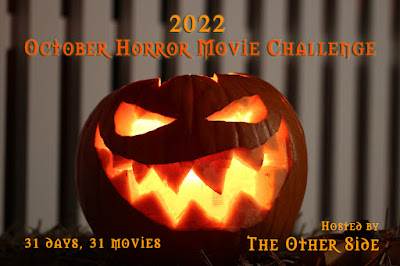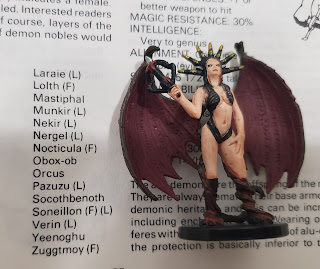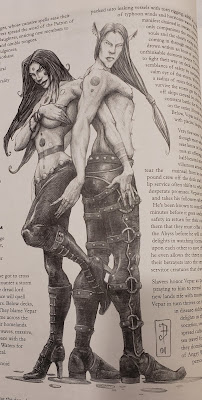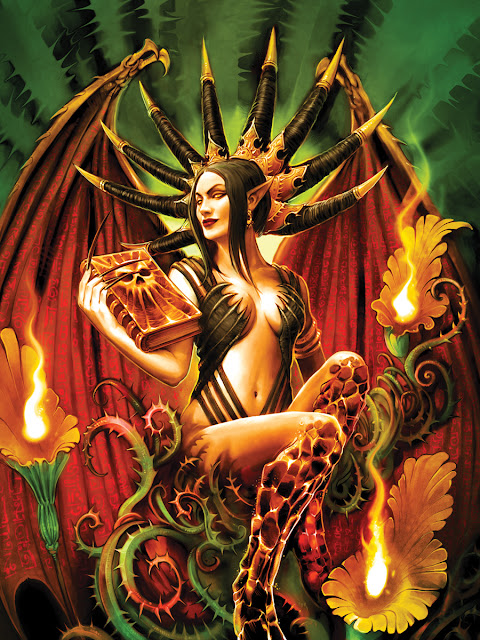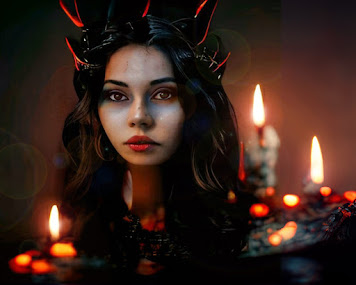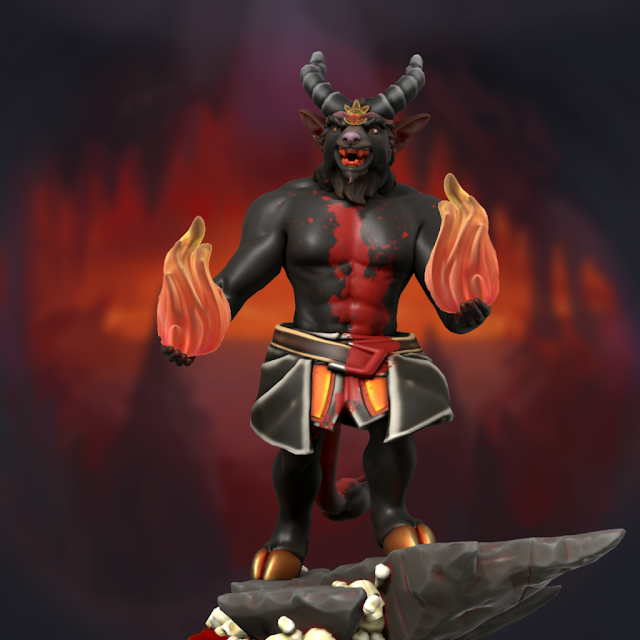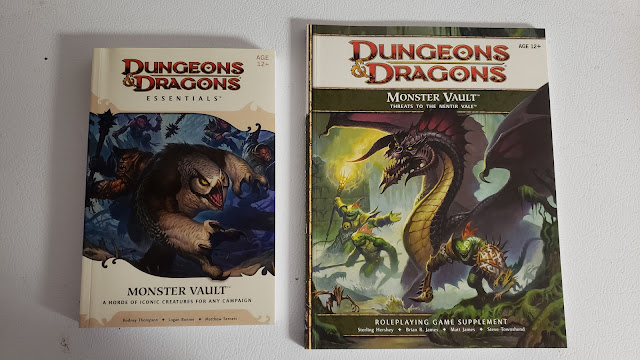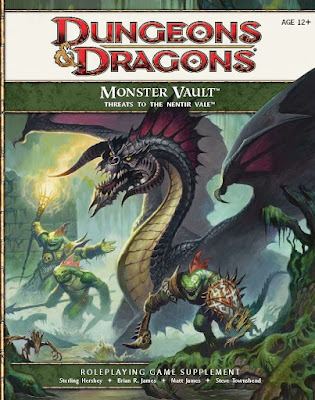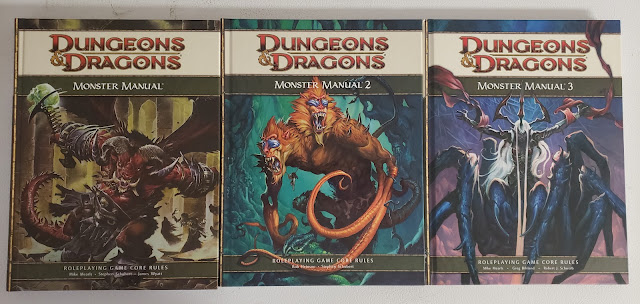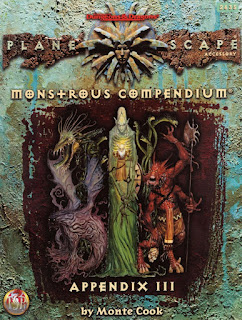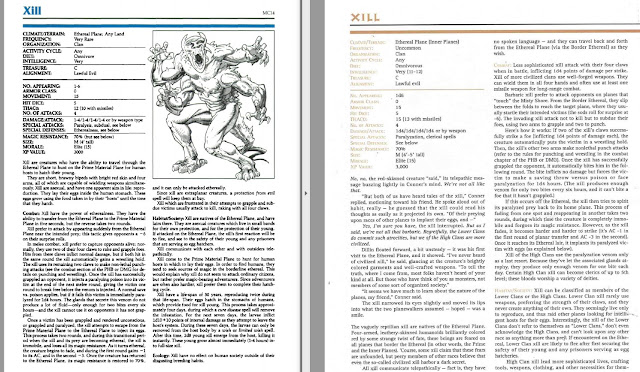Let's partake in a thought experiment. I am going to take the Gods
as written from
The Deities & Demigods and take them on a little trip.
This thought experiment, or Gedankenexperiment, as Einstien was fond of saying, was designed to cover a thought I had going back to my first reading of Norse Myths. That thought was what if the Norse Gods and Greek Gods were the same groups of gods represented in different parts of the world?
Roman-Norse Pantheon
Imagine if you will some Roman Pagans, say circa 300-500 CE. While Christianity is becoming the official religion of the Empire, not everyone is taking up the Christian Gods. There is still a mix of Pagan Roman gods, Greek Gods, local gods and spirits, house gods, and more. The further you are from Rome (and later also Constantinople) the more likely you are to still hold on to your local gods.
Now, far to the North, there are the Nordic-Germanic tribes. They are the "barbarians" of Roman lore, they want Rome's treasures, its power. But most of these people just want to find new lands to grow food on. While the Viking raids to England and Ireland are so stamped into our collective subconscious (and for many of us, our DNA) there were other forrays into other lands. Some we know went South. But the bulk of these did not happen till 800s CE when most of Europe was firmly Christianized. We do know that the Romans had interactions with the Norse and made connections between their respective sets of Gods. Romans were rather practical when came to religion.
We also know that the Norse, when confronted with Christianity adopted a uniquely Viking view of Jesus, recasting him as a great and powerful chieftain or king.
So let's imagine a time. Sometime after 300 CE but maybe before 900 CE. The Northmen are not all Viking raiders and the Romans are not all Christian. I joke that there is a time when this would be all true, likely for about 6 hours on a Thursday in June 634 CE, but go with me on this trip anyway. We have a group of Roman pagans moving north, a group of Northmen heading south. They both drift west a bit and end up in the Black Forest region of Southern Germany. Here they meet and instead of going to war, they build a community. Here their beliefs find common ground and since both groups are polytheists, they accept each other's Gods. Soon. The gods, like the people, become one.
First conceit: Since they did not go to war when first meeting their war gods on both sides will seem more "reasonable" than their antecedents.
Now keep in mind that at this time there were versions of the "Norse" gods in these Germanic areas. We know that Wotan and Woden would change and become Odin of the Norse. So bringing these gods "back down" is almost an unnecessary step. They were already here in a different form. Bu this allows me to focus on the names they have in the D&DG. Plus if I need to "smooth things out" I can use the Germanic versions.
Second conceit: While here this group of pagans will speak a version of Old German. Both groups picked it up "along the way."
While I want to focus on the names in the Deities and Demigods, I am going to allow myself to step outside of that to make for a better pantheon. Of course, life, especially when it comes to the Gods and syncretism, is never so ordered. But as we have seen with the D&D pantheons in the past, such order is often implied or imposed.
Some of this flows from some reading I was doing around the same time I discovered D&D. I had found this book of world myths. It had the familiar Greek, but it also introduced me to the Norse myths for the first time. This book also had the tale of Beowulf in the back. I began to think there was a continuity between these three separate, but not entirely separate really, groups of tales.
I should also note that these gods have similarities to each other not just because they were all invented by people that had similar experiences, but they all draw their inspiration from the same roots of an earlier Proto Indo-European pantheon of gods. I am not trying to recreate these PIE gods here, but I will lean heavily on that research to inform my choices. For this reason I am also including Celtic gods in this mix for now BUT I am not explaining that connection just yet. Though we do know that the Celtic Hallstatt culture and was in this area at this time and this grew out of the La Tène culture from earlier. Likely though the gods were not using the names in D&DG. I am so everyone here knows what I am talking about. I do like that there are three mythoi involved here.
Who's In Charge?
Let's start with who is the leader of this combined pantheon. We know from historical records that it was Thor, or more to the point, Thunor or Donar, and not Odin, that was the chief god of the Germanic peoples. Odin/Wotan would come along much later (8th to 9th centuries). This is good since already there was a lot of conflating of Thor/Thunor with Zeus/Jupiter. Thursday for example is both Thor's day and sacred to Jupiter. From this notion, we can move on in thought experiments to make other associations.
Now I am fully aware I am taking a historical god to make a precedent for game gods. This would be academic dishonestly since I have made no claim, nor provided support why it is ok for me to do this. Save for one. This is not an academic treatise. I am building something for a game, and for AD&D 1st Edition as it appears in the Deities & Demigods in particular. The Thor/Thunor/Jupiter connection is only the pin I am hanging everything else on.
The Gods
I am going to use the abbreviated "stat block" I used in One Man's God Special: Syncretism Part 2 when I described the pantheon of Greco-Egyptian Gods. Also considering that I am having this all happen somewhere in Germany I am going to give these gods German names. They are modern German names to be sure, I am not going to try to deconstruct 7th Century German when I have enough trouble remembering how to speak 20th (yes I know what I said) Century German.
While they have gods they are syncretized from they take on their own personalities. Thor could be a bit slow at times but was never cruel (unless you were a giant) and Zeus could be a loving father, but a terrible husband with a mean streak and a temper.
Unser Vater
Greater God
Alignment: Chaotic Good
Worshipper Alignment: Any Good (all)
Domains: Thunder, Lightning, Sky (including storms and rains), Warriors
Symbol: A Thunderbolt
Greek/Roman: Zeus/Jupiter
Norse: Thor, with a dash of Odin
Celtic: The Dagda
PIE: Dyēws
Unser Vater, "our father," is the chieftain of the gods. He rules because he is strong and powerful. He keeps Der Hüne at bay and protects those who pay him homage. He tries to be good and just but he has a temper that can rage out of control. He can usually be calmed by his wife Herde Oberin.
Other Gods follow.
Hüne Vater
Lesser (Intermediate) God
Alignment: Chaotic Evil
Worshipper Alignment: Any evil
Domains: Creation, destruction
Symbol: Fire
Greek/Roman: Chronos/Saturn
Norse: Surtr
PIE: Archdemon
Hüne Vater is the father of the current generation of the Gods. He killed his father and we in turn defeated by his own son. He is the leader of Die Hüne. Before his defeat he cursed the gods and all humankind with death. In Proto-Indo-European myths, he is the Archdemon. He sits imprisoned in exile.
Großvater & Großmutter
Lesser God
Alignment: Chaotic Neutral (Evil)
Worshipper Alignment: Any
Domains: Father of Die Hüne (the Titans/Jötunn), Chaos
Symbol: The night sky
Greek/Roman: Caelus/Uranus
Norse: Ymir
Others: Tiamat
Großvater/Großmutter is the name given to the quasi-anthropomorphic manifestation of the father/mother of the Die Hüne (the Titans/Jötunn). He was destroyed by his son Vater Hüne to make the night sky.
Herde Oberin
Greater Goddess
Alignment: Lawful Good
Worshipper Alignment: Any good
Domains: Home, hearth, women, childbirth
Symbol: Distaff
Greek/Roman: Hera/Juno, Hestia
Norse: Frigg
PIE: Diwōnā
Herde Oberin is the wife of Unser Vater and one of a trinity of Goddess. She represents the Mother aspect of the trinity and is the protector of home and hearth and the family. She is responsible for all things that happen within the home. Unser Vater may be the chieftain of the gods, but in the home her word is law.
Mutter Natur
Greater Goddess
Alignment: Neutral
Worshipper Alignment: All
Domains: Nature, the wild
Symbol: Tree or a sheath of grain
Greek/Roman: Demeter/Ceres
Norse: Frigg with bits of Odin
Celtic: Danu
PIE: Dhéǵhōm
Mutter Natur is the mother goddess of all of nature. She is sister to Vater Hüne and aunt (and maybe mother) to Unser Vater. She is an old Goddess who provides and destroys at her own times of choosing. Newer religions believe they control or tame her, but the people of the forest know better.
Note: I am undecided on whether or not Herde Oberin and Mutter Natur are not aspects of the same goddess. Often times you see gods and goddesses getting reduced as the pantheons age. BUT also you see gods and goddesses splitting off. In this case, I am keeping them separate for now.
Ôstara (Geliebte)
Lesser (Intermediate) Goddess
Alignment: Neutral Good
Worshipper Alignment: All
Domains: Spring, Rebirth, the Dawn
Symbol: Half-risen sun or an Egg
Greek/Roman: Persephone/Proserpina with aspects of Dionysus / Bacchus
Norse: Ēostre and bits of Baldur.
Celtic: Brigit and Ceridwen
PIE: Hausos
Ôstara is the daughter of Mutter Natur and one that has retained her old name. She is the goddess of the Spring, the Dawn, and rebirth. Her title is "Geliebte" which means "beloved." Persephone/Proserpina and Baldur are both loved by the gods and their "deaths" greatly affect all involved.
Liebhaberin
Lesser (Intermediate) Goddess
Alignment: Chaotic Good
Worshipper Alignment: Any good, lovers
Domains: Love, sex, sexuality, conception
Symbol: hand mirror or fire
Greek/Roman: Aphrodite/Venus
Norse: Freya
Celtic: Brigit and Áine
Liebhaberin is the forever young patroness of love and sex. She serves as the Maiden in the trinity of Goddesses. She is the spring maiden that stirs the blood and brings the world back to life. She is the patroness of nymphs and dryads.
Note: Again, I am unsure whether or not Ôstara and Liebhaberin are just different aspects of the same goddess.
Helga
Lesser (Intermediate) Goddess
Alignment: Neutral
Worshipper Alignment: Any, witches
Domains: Death, magic, underworld
Symbol: woman's face in a hood
Greek/Roman: Hecate, Hades
Norse: Hel, Frau Holt, Heiðr
Others: Isis
Celtic: The Triple Goddess* (reconstruction)
Helga is the Witch Goddess, the Ghost Queen, and the Crone of the trinity. She knows all secrets since they are whispered to her by the dead. Thus she knows all the secrets of magic.
Hüter
Lesser (Intermediate) God
Alignment: Neutral
Worshipper Alignment: None
Domains: Death
Symbol: Skull
Greek/Roman: Hades/Pluto, Hermes/Mercury
Norse: Njord, Odin
Celtic: Arawn
Others: Osiris
Hüter is the dispassionate lord of the dead. He is neither good nor is he evil. His role is to make sure the dead stay dead. Therefore undead are blasphemous to him. He controls the underground realm and thus all riches that come from the ground are his.
Betrüger
Lesser (Intermediate) God
Alignment: Chaotic Neutral
Worshipper Alignment: Any
Domains: Trickery
Symbol: Fox
Greek/Roman: Hermes/Mercury
Norse: Loki/Hermod
Others: Reynard the Fox (though this is about 900 years too early for Reynard)
Betrüger is the trickster of the gods. He often appears in the form of a talking fox. His jokes can be somewhat dangerous, but he is rarely cruel.
Kriegskönig
Lesser (Intermediate) God
Alignment: Lawful Neutral
Worshipper Alignment: Any, warriors
Domains: War, Battle
Symbol: Sword
Greek/Roman: Ares/Mars
Norse: Tyr/Vidar
Celtic: Nuada
Kriegskönig, the War Lord, is the general of Unser Vater's armies. He commands legions to fight against Der Hüne. He lives for war and when he is not involved in a war he is looking to create new wars.
Note: Because my two sets of travelers did not immediately go to war with each other when they met this tempers the way the ward god is looked at. He is not a warmongering asshole like Ares nor even the god of justice that is Tyr. War is unfortunately a reality of life and one that must be respected or it quickly gets out of hand.
Jäger
Lesser (Intermediate) God
Alignment: Lawful Neutral
Worshipper Alignment: Any, hunters
Domains: the sun, hunting, poetry
Symbol: Sun
Greek/Roman: Apollo
Norse: Freyr/Bragi/Uller
Celtic: Nuada
PIE: Sehaul
Jägerin
Lesser (Intermediate) God
Alignment: Chaotic Neutral
Worshipper Alignment: Any, women, hunters
Domains: Hunting, women, gathering Die Kriegerin
Symbol: Cresent Moon
Greek/Roman: Artemis/Diana and bits of Athena/Minerva
Norse: Freya / Skaði
Celtic: The Morrigan
PIE: Mehanot
Jäger and Jägerin are the twin god and goddess of the sun and moon respectively. They are also the god and goddess of the hunt since hunting in this area is important. They are based on both sets of twins Apollo and Artemis/Diana from the Greco-Roman and Freyr and Freya from the Norse. If there were elves in German at this time then they are the gods of them as well.
When needed Jägerin can don the armor of war and gather Die Kriegerin, the Goddesses of war (much like the Valkeries). When the moon eclipses the sun it is said that Jägerin has put up her shield to protect her and her brother in battle.
Others include,
Schmied (Hephaestus/Vulcan and Wayland and Goibhnie) the God of Smiths. I really should give him more detail.
Vater Meeren (Poseidon/Neptune and Njord, Ægir, and Rán and Manannan Mac Lir) the God of the Sea (lesser importance here).
Verwildert (Pan/Faunus and Freyr/Óðr/Vættir and Péhausōn) the God of Wild Nature and protector of wild places (greater importance now).
Magni Stärke (Heracles and Magni) and Muthi (Iphicles and Modi) are the twin demi-gods of Strength and Courage respectively. Bits of Romulus and Remus and Hengist and Horsa are also here.
Siege (Nike/Victory and Sigyn) and Glücke (Tyche/Fortuna and Hamingja) are the twin lesser goddesses of Victory and Luck respectively.
Fata Norne (The Fates and The Norns) are the three Fates. Even the gods have to answer to the Fates.
Die Hüne are the Titans and the Giants of both myths. Primordial beings of great power that the gods defeated but still trouble them. In this myth, the Gods fought Die Hüne and brought order out of chaos. These are not just giants and titans, these creatures are the demons of this mythology.
Jäger and Jägerin are twins. Magni and Muthi are twin brothers. Nike and Tyche are twin sisters. These sets are all examples of the Divine Twins we see in many, many myths. Something I like to include in many of the myths I create.
I like it. It combines a lot of things that I have scattered notes on here and there. This also explains why this one has taken me a few months to write (it was Part 1 of this series at one point). I have notes dating back to the late 80s on a wholly new pantheon I was creating. This is not that pantheon, but it is a good approximation to what I wanted there. It's not the same, but it fits in the same sized hole.
Right now it is a little too "clean" and ordered. There is no drama with these gods. Granted this is the same as what you could read in the Deities & Demigods, but we know the stories are much messier.
I might need to come back to this one sometime. It would work well in my games to be honest and I even have some ideas on how to incorporate the ideas of Sol Invictus into this to set up one of my favorite themes, the battles of Monotheism vs Pagan Polytheism.
If I write more and can come up with a stat block I like I might release it under Creative Commons or the OGL so others can add to it. I hope to do more than just randomly recreate the PIE gods with new names.
One Man's God Special: Syncretism


